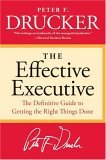StrategyDriven Resource Management Forum

Old Pentagon Quote
Organizations are complex creatures comprised of personnel with varying personalities, talents, needs, and aspirations. Increasing this complexity is the wide array of organizational possessions: tools and materials, physical and intellectual properties, and financial instruments. Ordering this complex collection of resources to ensure the efficient, highly engaged use of all of the organization’s assets is the function of the resource management program.
Processes associated with an organization’s resource management program vary between the strategic and the tactical. Within the realm of strategic planning, resource management encompasses the processes and activities of performing annualized projections and monthly/weekly capacity planning. Extended into the tactical arena of business execution, resource management involves scheduling; acquisition; retention; maintenance and development; and termination, retirement, and release/disposal of assets.
Resource management, whether strategic or tactical, focuses on personnel, material, land, intellectual property and financial instruments. In strategic planning, resource management processes group assets into large categories based on common characteristics. As processes narrow their focus from long-range to tactical resource planning, asset focus becomes more specific; even to the point of uniquely identifying the asset to be involved in an activity.
Focus of the Resource Management Forum
Materials in this forum are dedicated to discussing the leading practices of companies successfully executing a resource management program in support of strategic planning and tactical business execution. The following articles, podcasts, documents, and resources cover those topics foundational to a strong resource management program.
Articles
Principles
- Value of Effective Resource Management [StrategyDriven Premium Content]
- High overtime? You may have too many people. [StrategyDriven Premium Content]
Best Practices
- Best Practice – Attract the Best with Accountability [StrategyDriven Premium Content]
- Best Practice – Categorical Activity Prioritization [StrategyDriven Premium Content]
- Best Practice – Establishing the Foundation for Personnel Resource Sharing [StrategyDriven Premium Content]
- Best Practice – Ongoing Assessment of the Market Availability of Strategic Resources [StrategyDriven Premium Content]
- Best Practice – Staggering Project Starts [StrategyDriven Premium Content]
Warning Flags
- Warning Flag – Frequent, Inaccurate Resource Needs Estimation [StrategyDriven Premium Content]
- Warning Flag – Parkinson’s Law [StrategyDriven Premium Content]
- Warning Flag – Marginalizing Employee Contributions [StrategyDriven Premium Content]
StrategyDriven Expert Contributor Articles
- Five Steps to Resource Optimization: Any process can be improved, but it takes alignment to get it optimized by Ed Hughes, Becca Goren, and Mary Grace Crissey



